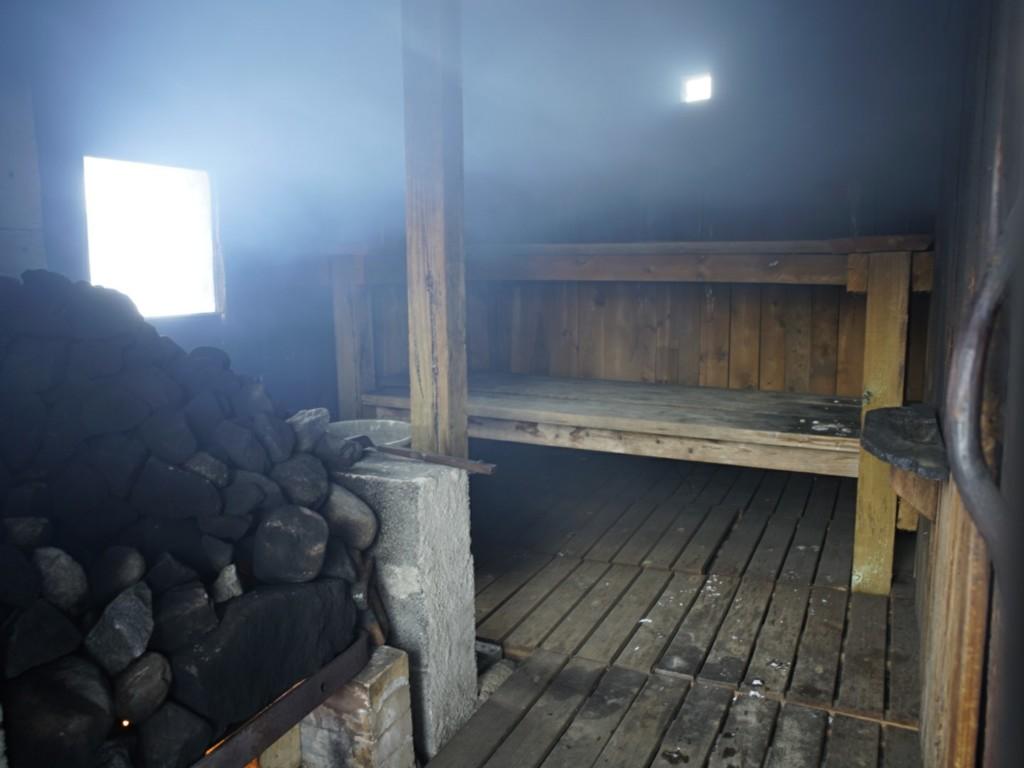
About the hygiene of sauna
The hygiene aspect affects the comfort and health of the bathers, as well as the structural and aesthetic durability of the sauna itself. Appropriate building and maintenance solutions increase the cosiness and longevity of a sauna. By contrast, unfavourable conditions may darken even newer wooden surfaces, which reduces their attractiveness.
About microbiology
In terms of microbiology, a sauna does not pose a health risk, as the microbes that are typically found there are part of normal human flora. The amounts are usually too small to result in an infection, and microbes are unable to penetrate healthy, unbruised skin. Moreover, pathogenic bacteria are generally killed in relatively low temperatures within a short period of time.
For example, the gonococci bacteria, which cause a sexually transmitted disease known as gonorrhoea, will die within 2–3 minutes at 50 °C; the staphylococci, responsible for skin infections, will die in around 20 minutes at 60 °C; and the dermatophytes that cause athlete’s foot will die in 10–20 minutes at 50–80 °C, depending on the specific fungus. The HI virus will die in 10 minutes at roughly 56 °C.
The bacteria found in the washing room and surfaces of a sauna (wooden benches) mostly match the flora found on the skin. The most common types include gram-positive coccus bacteria (staphylococci) and gram-positive bacilliform bacteria (bacilli and corynebacteria). These bacteria are generally not very contagious and cannot penetrate healthy skin. However, they can also tolerate heat relatively well, and their amounts will not change significantly despite washing or drying the sauna. More gram-negative bacilliform bacteria – including mainly urinary tract flora and bacteria from tap water – can be found on the floor and lower benches. In hospitals, these bacteria may cause infections to patients with weakened immunity. However, in saunas, they normally cause no issues, because they are susceptible to both heat and dryness and cannot therefore survive at the bench level.
The amount of fungi and mould in a sauna depends on the humidity. Dermatophytes, which cause athlete’s foot, were not detected in this study. This result differed somewhat from earlier studies carried out in the 1960s and 1970s, although this may be explained by improved personal hygiene levels and effective modern fungal treatments.
Normal cleaning sufficient at home, but disinfectants needed in public saunas
Few studies have been made on how saunas should be cleaned, but the results mostly indicate that general cleaning agents have little impact on the microbe flora in saunas. Oxidising disinfectants and those containing chlorine can reduce the amount of microbes, but even hospitals are in the process of reducing the use of strong disinfectants. Therefore, their use in saunas is probably unnecessary too. Cleaning agents that contain chlorine are usually quite unhealthy for cleaners, and they do not seem to have any effect on mould or yeast. That is why we may be able to conclude that ordinary detergents are adequate for washing a home sauna. However, disinfectants may be needed in public saunas, which are more heavily used.
Attempts have been made to find effective and safe alternatives to cleaning agents. However, in practice, the same space may be cleaned with different products, depending on different individuals’ preferences. The temperature in a sauna may exceed 40 °C during cleaning, making detergents with chlorine a health risk. Heat accelerates the evaporation of chlorine, and therefore these products must always be diluted with cool water. Chlorine must also never be used together with acidic products, because on hot surfaces and in hot spaces acid will accelerate the release of chlorine, which is dangerous to health. Furthermore, chlorine is environmentally harmful.
Recommended ways to improve the level of hygiene in saunas
- Clean the sauna immediately after use.
- A clean sauna will dry efficiently after a wash with the remaining heat from the heater, aided by intensified ventilation.
- Never use a high-pressure washer.
- Lighter cleaning methods and ordinary detergents are sufficient for a sauna.
- Use a mildly alkaline detergent to remove grease.
- Use a mildly acidic detergent to remove calcium build-up.
- The benches should be easy to wash and cause no problems with washing the rest of the sauna.
- The gaps in the benches should be easy to wash, and you should be able to lift up the benches.
- The benches should not absorb water or impurities.
- The benches should be easy to air out and should dry quickly on both sides.
- Overall tidiness and sufficient light make a sauna more pleasant.
- Water should drain off the floor efficiently. Visible stains should be removed.
- Keep the floor drains clean and easy to wash.
- Remove any unpleasant smells.
- Favour light surfaces, use gentle artificial lighting or let in natural light through the windows.
List of sources:
Keinänen, J. et al. 2002. Uimahallien ja sivutilojen hygieniaopas. Ympäristö ja Terveys.
Ojajärvi, J. et al. 1985. Sauna- ja pesutilojen puhdistaminen. Heikosti emäksisen ja klooripitoisen puhdistusaineen vertaileva tutkimus. Siivoussektori 1/1985, 9–13.
Saari, M. et al. 2002. Terveen saunan tekijät. VTT Tiedotteita 2144.
Salminen, K. et al. 1972. Tutkimus eräiden pesu- ja desinfektioaineiden tehosta saunojen puhtaanapidossa. Ympäristö ja Terveys, 3.
Väänänen, A. et al. 1988. Iho-ja sukupuolitaudit ja sauna. Duodecim, vol 104, No 8, 636–640. ISSN 0012-7183.
Äikäs, E. et al. 1967. Asuintalojen yhteissaunojen hygienia. Sienien esiintyminen. Valtion teknillinen tutkimuslaitos, Lämpöteknillinen laboratorio. Helsinki.
The information on this page was compiled by Docent Kirsi Laitinen (PhD) from the University of Helsinki’s Department of Public Health.